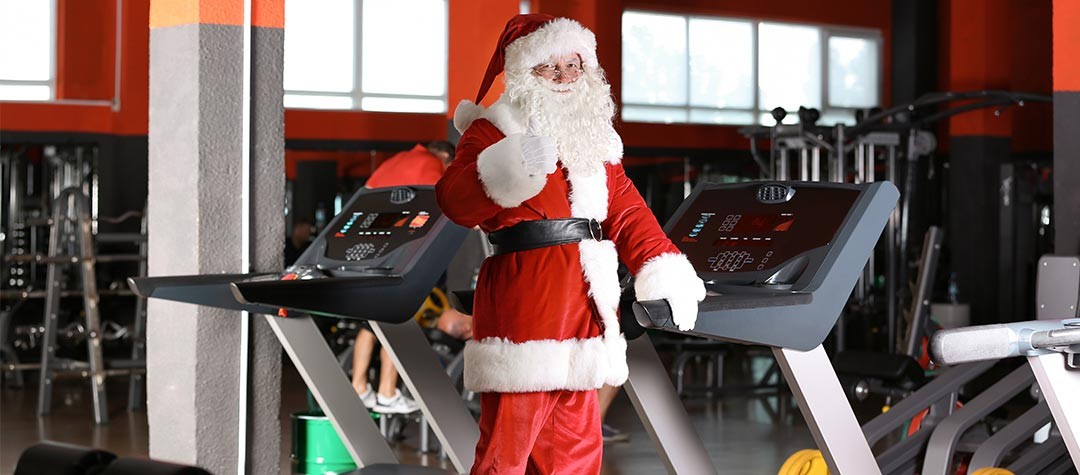You can only get away with being a slob for so long, so here’s a few resolutions to ease you out of sedentarism.
1. Change your view
It’s likely that if you’ve become very inactive, you dislike exercise. But that’s probably because you’ve pigeonholed it — believing it only entails certain activities, in certain places (like gyms!). But a brisk walk in the park, a game of tennis or a gentle yoga class qualify every bit as much as a step aerobics class or a 5k run. Open your mind to new ways of getting active.
2. Add more energy to daily activities
You may think of activities like vacuuming, washing clothes, window cleaning and gardening as chores, rather than opportunities for exercise — but do them with gusto and you can really work up a sweat! And, of course, there’s the payoff of having got the job done. Putting lively music on while you do household chores is a good way of making you move around more.
3. Wear comfortable shoes
It might sound like something that your grandmother would say, but if you spend most of your time in high heels, heavy boots or stiff leather loafers, standing still on the escalators is always going to win out over bounding up — a cab is always going to seem like a better idea than walking. If you can’t ditch the heels, at least travel to and from your destination in more action-friendly footwear.
4. Get a pedometer app
Smartphones and smartwatches are called this for a reason. Loads of different apps exist to cater to your fitness needs, such as a pedometer, which can tell you how many steps you’ve taken, how far you’ve walked, and how many calories you’ve burned. This can really help with hitting targets like 10,000 steps a day.
5. Abide by the 10-minute rule
Jumping in the car for a 10 minute drive isn’t really necessary unless some seriously heavy lifting is involved. Just need a couple of things from the shop? Walk it, it won’t feel like much but it’ll benefit you in the long run if you walk everywhere within 10 minutes of each other.
6. Stretch yourself
Okay, so stretching isn’t going to make you into a lean, mean calorie-burning machine — but it will get you more in touch with your body; helping you mobilise your joints; get to know where different muscles are; and find out the areas in which you are tight and tense. And stretching feels great, too. Make a gentle stretch first thing in the morning or when you get home from work part of your regular routine.
7. Raise your awareness
Give yourself a pat on the back as you begin to add more activity into your daily life — but don’t make the mistake of thinking that a half-hour burst of activity means you can ‘let it all hang out’ for the rest of the day! Being aware of things like posture and the way you move your body is a 24-hour-a-day task. For example, you can undo all the good of an hour-long Pilates class by sitting at your desk with hunched shoulders and your stomach hanging out for the rest of the day. Equally, it’s no good practising perfect squatting technique when you are exercising if you bend from the waist or don’t think about your knee position when you bend down to pick up your child, or a heavy box, off the floor.
8. Opt for bite-size workouts
If the idea of going to the gym or taking a fitness class is intimidating, do mini workouts at home. Apps for your phone have been developed to help those with a busy work life by offering bite-size intense workouts to do every day. Usually between 5 to 10 mins cardio, these workouts are great to do throughout the day.
9. Get some support
Changing your lifestyle is never easy — it takes time for new patterns of behaviour to become habit — so get as much support as you can. It may be from an outside source, such as a personal trainer, your doctor or an exercise instructor — or it could entail teaming up with your partner or a friend, so you can provide each other encouragement, feedback and motivation.
10. Believe it doesn’t have to hurt
A common misconception among sedentary people is that exercise has to hurt to be doing any good — the old ‘no pain, no gain’ adage. Well, it’s not true — particularly at the early stages of getting active. Gentler paced workouts allow you to continue for longer than tougher ones, they put you at less risk of injury and they also increase fat utilisation, lower blood pressure and ease stress.
A final word
Remember to be patient — changes in your fitness, weight and body shape aren’t going to come overnight. Too-high expectations only lead to disappointment, so sit back and enjoy the journey to better health and fitness.














